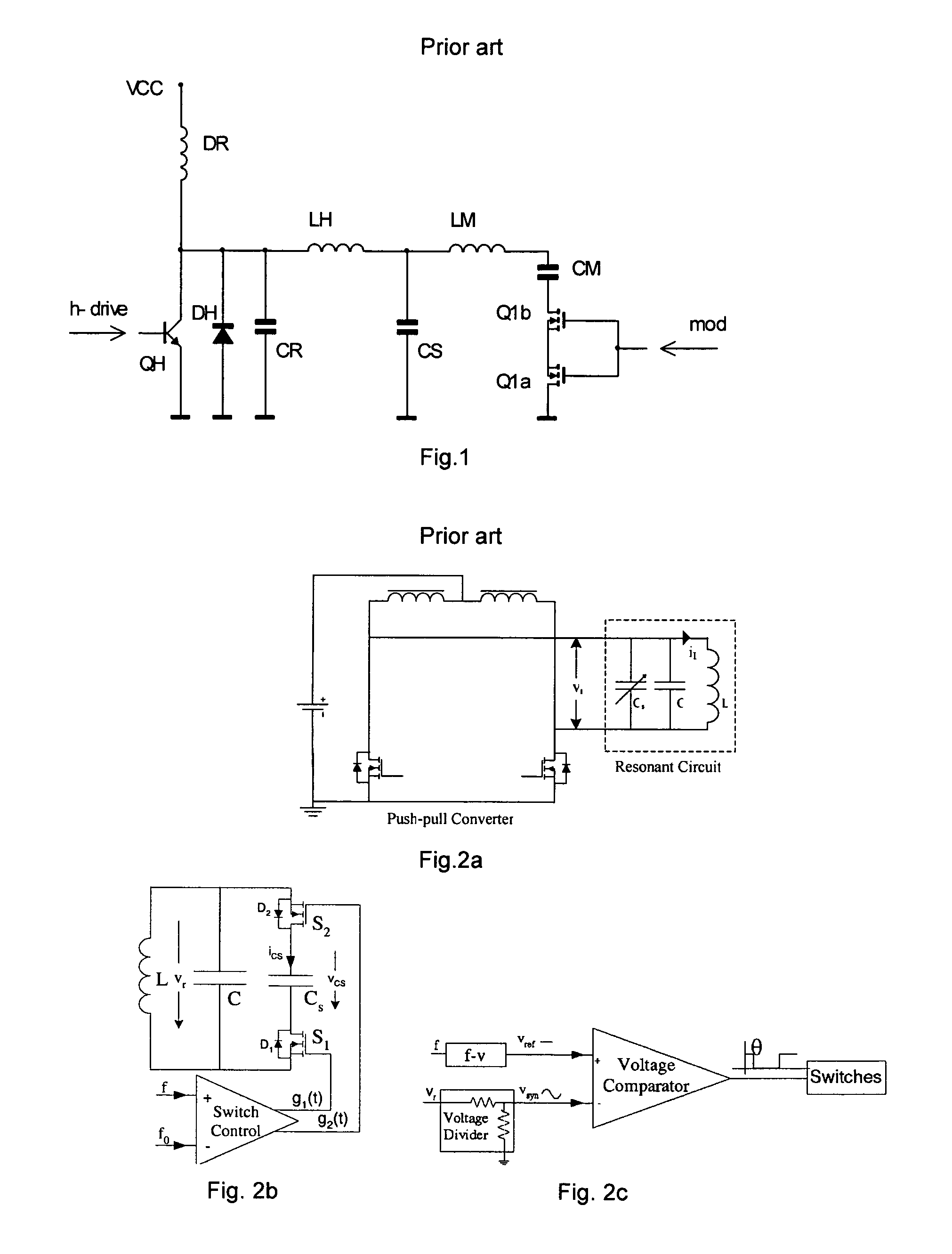Large signal VCO
a technology of large signal and resonant network, applied in pulse generators, instruments, pulse techniques, etc., can solve the problems of undesirable load detuning, power transfer principles using resonant circuits, unit resonance frequency detuning,
- Summary
- Abstract
- Description
- Claims
- Application Information
AI Technical Summary
Benefits of technology
Problems solved by technology
Method used
Image
Examples
Embodiment Construction
[0035]The block diagram of a series push-pull oscillator with a controlled capacitor in the resonant network shown in FIG. 3 according to a first embodiment. Herein, this oscillator is used as a base station in a wireless power supply system, but it can be used as any oscillator. The switches Qv1 and Qv2 form a series push-pull stage (half bridge), which couples its center alternately either to VCC′ or to a reference potential (ground). The switches Qv1 and Qv2 are alternately open or closed. In one embodiment, the switches Qv1 and Qv2 are of the same channel type (either two P-channel or two N-channel MOSFETs respectively either two PNP or two NPN IGBTs). The opposite-phase drive signals V1 and V2 are guaranteed by the inverter (Inv). In another embodiment, the switches Qv1 and Qv2 are of complementary types (P / N channel MOSFETs or PNP / NPN bipolar transistors or IGBTs), there Inv is not implemented. The center tap of the switches is connected to a series resonant circuit consisting...
PUM
 Login to View More
Login to View More Abstract
Description
Claims
Application Information
 Login to View More
Login to View More - R&D
- Intellectual Property
- Life Sciences
- Materials
- Tech Scout
- Unparalleled Data Quality
- Higher Quality Content
- 60% Fewer Hallucinations
Browse by: Latest US Patents, China's latest patents, Technical Efficacy Thesaurus, Application Domain, Technology Topic, Popular Technical Reports.
© 2025 PatSnap. All rights reserved.Legal|Privacy policy|Modern Slavery Act Transparency Statement|Sitemap|About US| Contact US: help@patsnap.com



